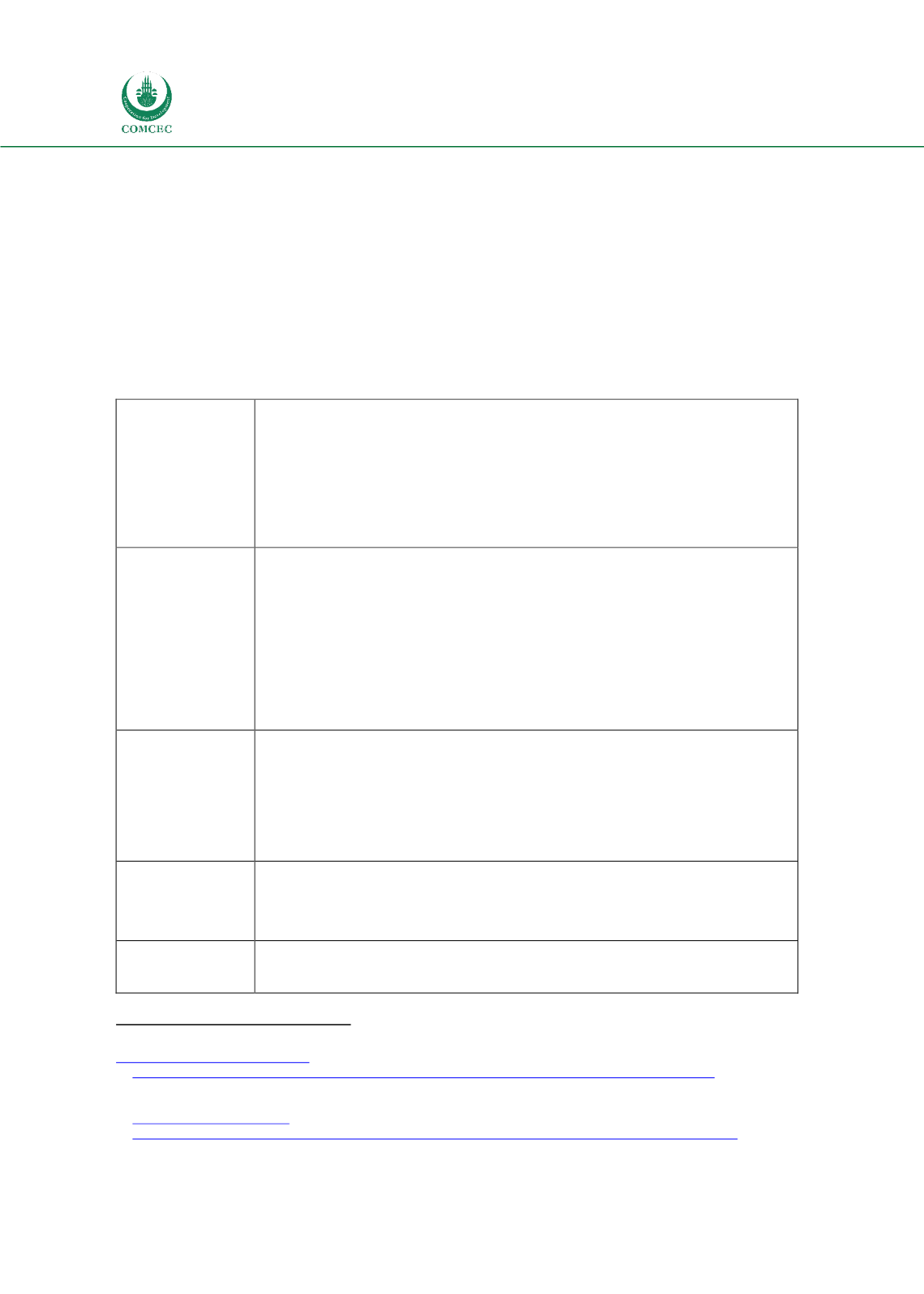

Improving the Border Agency Cooperation
Among the OIC Member States for Facilitating Trade
66
harmonisation and coordination of trade policies across all member states. The project also
improves gathering and analysing regional trade and economic statistical data. The intent is to
promote cooperation between member states to harmonise statistical data on import and
export activities. In practice this means closer customs cooperation, as customs
administrations are usually the competent authorities in charge of data collection on imports
and exports. WATIP also assists in the establishment of a monitoring system with indicators to
measure the level of harmonisation of statistics on trade and assess the data collection
methods of ECOWAS and member states.
100
Other regional initiatives
Table 9. Other regional initiatives in African region
Central African
Economic and
Monetary
Community -
CEMAC
The roots of the Central African Economic and Monetary Community or
Communauté Économique et Monétaire des Etats de l'Afrique Centrale (CEMAC) go
back as far as 1919, and the current CEMAC was established in 1994. The main
objectives of the Community are to converge and monitor national economic
policies, to coordinate sectoral policies and to progressively create a single market.
CEMAC is made up of six members: Gabon, Cameroon, the Central African Republic
(CAR), Chad, the Republic of the Congo and Equatorial Guinea. Three of these are
OIC members.
101
Cross-Border
Initiative - CBI
The Cross-Border Initiative (CBI) represents a common policy framework
developed by 14 countries in Eastern and Southern Africa and the Indian Ocean
(including two OIC member states: Comoros and Uganda), with the support of four
co-sponsors: the International Monetary Fund, the World Bank, the European Union
and the African Development Bank. Some of the CBI sub-initiatives, such as the
creation of a single goods customs declaration form that has been introduced by
most countries, pave the way for BAC. A single goods declaration facilitates
cooperation between customs administrations in the region and improves
information exchange in order to achieve better coordination among the various
governmental agencies involved in international trade.
102
Economic
Community of
Central African
States – ECCAS
The Economic Community of Central African States (ECCAS) was established 1983
but remained inactive for a long period, due to financial difficulties and the conflict
in the Great Lakes area. The objective of the Community is to promote balanced and
self-sustaining development in all areas of economic and social activity in order to
achieve collective self-reliance and raise the standard of living of the population.
ECCAS comprises 10 member countries in Central Africa. Three of these, Cameroon,
Chad and Gabon, are OIC member states.
103
Indian Ocean
Commission – IOC
The Indian Ocean Commission (IOC) is an intergovernmental organisation
consisting of five countries along the Indian Ocean (Comoros, Reunion, Madagascar,
Mauritius and Seychelles). One of the four building blocks of the OIC is economic
and commercial cooperation.
104
Mano River
Union - MRU
The Mano River Union (MRU) is an intergovernmental organisation of four
members: Cote d’Ivoire, Guinea, Liberia and Sierra Leone. Three of these are OIC
countries. The key mission of this organisation is to integrate their economies and
100
www.ecowas.int/;
www.giz.de/en/worldwide/20759.html www.bidc-ebid.com/en/index.php (accessed 2 June 2016)
10
1 www.internationaldemocracywatch.org/index.php/central-african-economic-and-monetary-community (accessed 5 June
2016)
10
2 www.imf.org/external/np/cross/(accessed 5 June 2016)
10
3 http://au.int/en/recs/eccas(accessed 10 June 2016)
10
4 http://eeas.europa.eu/delegations/mauritius/regional_integration/indian_ocean_commission/index_en.htm(accessed 7
May 2016)
















